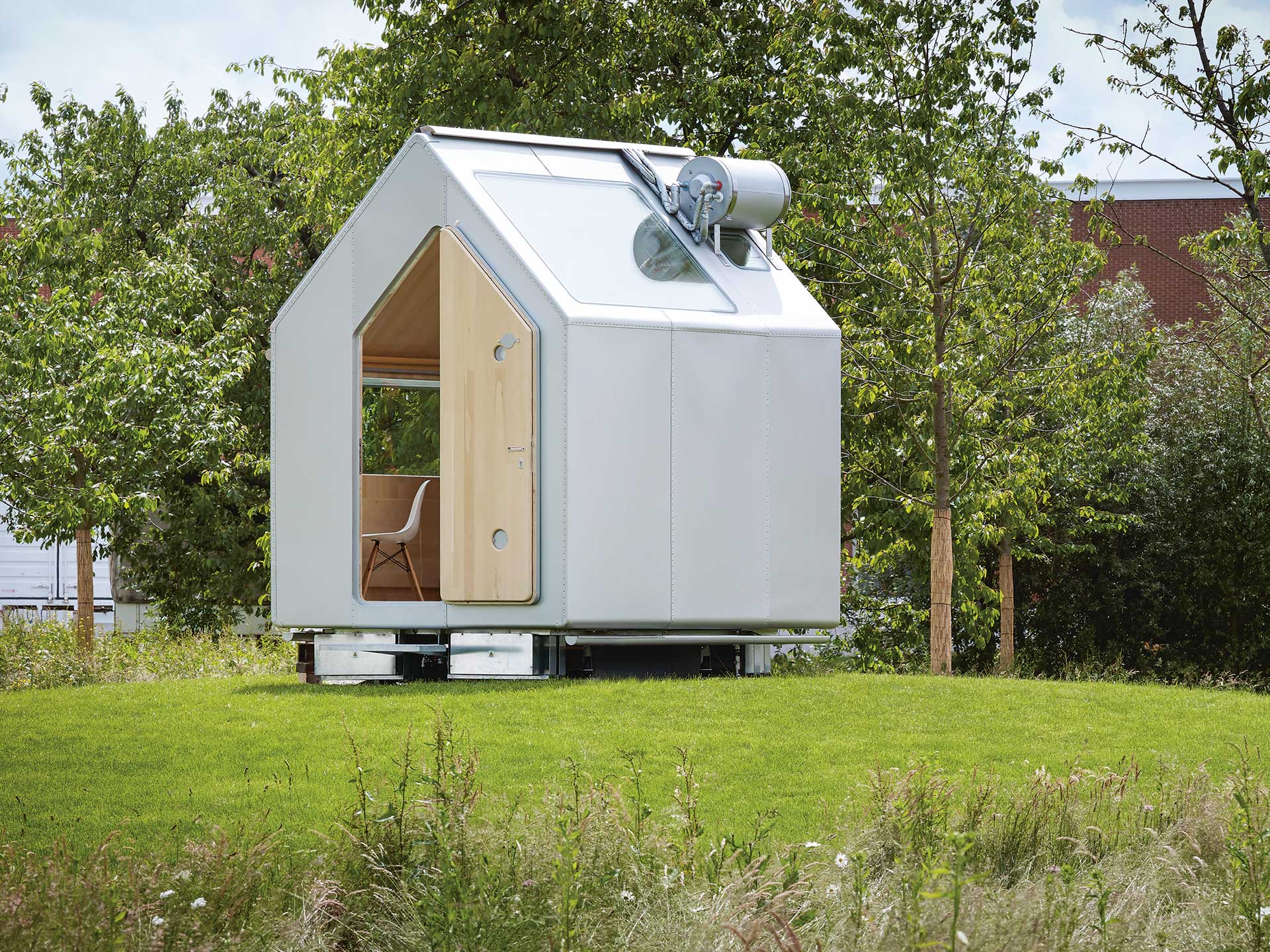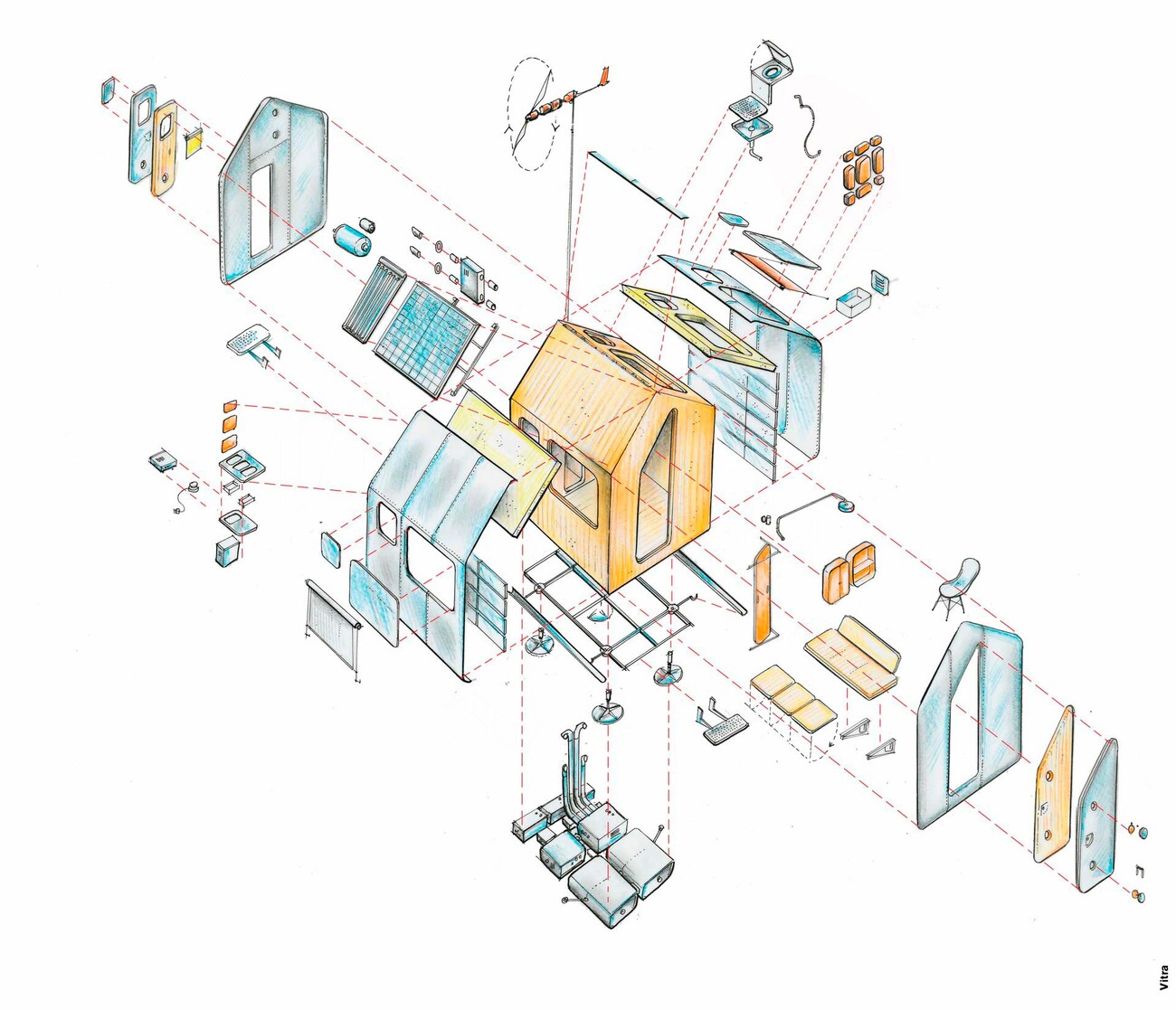Diogene, Weil am Rhein, Germany


“Diogene” is not an emergency accommodation, but a voluntary place of retreat. It is supposed to function in various climate conditions, independent of the existing infrastructure, i.e. as a self-sufficient system. We live in an age in which the demand for sustainability forces us to minimise our ecological footprint. This postulate is paired with the desire to concentrate and reduce the direct living environment to the truly essential things.
With a surface area of 2.5 x 3 metres when fully assembled and furnished, it can be loaded onto a lorry and transported anywhere. Whereas “Diogene’s” exterior corresponds to the image of a simple house, it is in truth a highly complex technical structure, equipped with various installations and technical systems that are necessary to guarantee its self-sufficiency and independence from the local infrastructure: Photovoltaic cells and solar modules, a rainwater tank, a biological toilet, natural ventilation, triple glazing. The required water is collected by the house itself, cleaned and reused. The house supplies its own power and the necessary platform is minimised.
“Diogene” is equipped with everything you need for living. The front part serves as a living room: On one side, there is a pull-out sofa; on the other, a folding table under the window. Behind a partition, there are a shower and toilet as well as a kitchen, which has also been reduced to the necessary. The house and furnishings form a single unit. It is constructed from wood with a warm character, which also defines the interior. For the purpose of weather protection, the exterior is coated with aluminium paneling.
The overall shape and saddle roof resemble the archetype of a house, but its rounded-off corners and the all-over façade materials also give the impression of a contemporary product. It is no simple hut, but instead a technically perfect and aesthetically attractive refuge. The great challenge lies in planning the complex product so that it is suitable for industrial series production. “This little house is the final result of a long, long journey partially driven by desires and dreams, but also by technicality and a scientific approach,” explains Renzo Piano.


